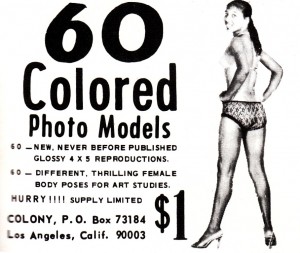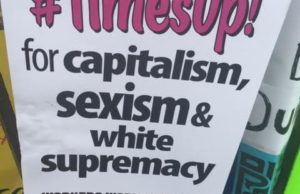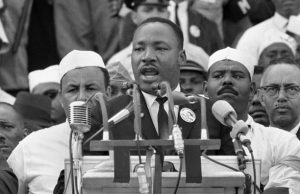In Solidarity with Mireille Miller-Young: Porn Studies, Context, and Speech
By Heather Berg
Various scholars, journalists, and shock jocks have shared their perspectives on the March 4th encounter between UCSB Professor Mireille Miller-Young and the anti-choice group Survivors of the Abortion Holocaust (writing this out gives me the creeps so I’ll use SAH subsequently). I am not interested in presenting a judgment of Professor Miller-Young’s actions; there already exists plenty of that and very little of it is interesting. Instead, I am speaking about the purported connections between Dr. Miller-Young’s research and teaching on pornography and the neo-conservative presentation of her as curtailing SAH’s right to free speech.
For example, SAH protestor Thrin Short told Fox News, “I’m sorry if these signs offended her in any way but after all, she does show porn to her students so she’s not really the one to talk about offending images.” Short’s non-apology suggests that the speech called upon in the classroom, a space used to critically analyze the sex industry as part of cultural production, and that of displaying massive signs depicting mutilated fetuses in public spaces without viewers’ consent are somehow equivalents.
As a celebrated porn scholar, Dr. Miller-Young is exactly the “one to talk about offending images” and has made these conversations a central part of her pedagogy and scholarship. Showing pornographic images are only a small part of her teaching. In the courses that I’ve taken, we spent much more time reading labor theory and black feminist critique than looking at “nudie” pictures. Where visual analysis was part of the curriculum, Dr. Miller-Young used this mode of analysis as an entry point to grapple with pressing questions about cultural production and consumption. Dr. Miller-Young and other critical porn scholars use pornographic images to open up discourse. She challenges us to ask ourselves: what is it about the image that might be hitting a nerve, and what does this say about our relationships to sexuality and labor? Dr. Miller-Young’s scholarship on black women porn workers requires us to consider images in context, how performers experience their sexual labor, how such work fits within a constellation of black women’s cultural production, and how this can be understood in view of black women’s histories of creative resistance to the violent commodification of their bodies.

One of the images Dr. Miller-Young analyzes in her scholarship.
http://mireillemilleryoung.tumblr.com/page/4
In contrast, groups like SAH show incendiary images in order to foreclose conversation. The sense of historical and socio-economic context that is central to Dr. Miller-Young’s writing and teaching is explicitly erased in anti-choice depictions of mutilated fetuses, which are presented as outside history, political economy, and, of course, the deeply personal stories of the women once connected to them. Consent too, is foreclosed at every turn, not just for viewers and actual Holocaust survivors whose tragedy has been appropriated in the crudest possible manner, but also for the women whose fetuses are depicted in epic proportions by groups for whom these bodies are no more than mascots. Though I’m not a believer in “fetal personhood,” I wonder how those that are could possibly see this approach as respecting humanity.
I write in solidarity with Professor Mireille Miller-Young for the reasons that other contributors in this thread have elaborated before me. Importantly, I also write to thank her for the generative scholarship she generates and teaches, which couldn’t be more different from the toxic drivel by groups for which the idea of open exchange is so understandably terrifying.
____________________________________
 Heather Berg is doctoral candidate in feminist studies at the University of California, Santa Barbara. Her research examines organizing and policy in sex industries and her current project explores labor politics in the adult film industry. Heather’s essay “Laboring Porn Studies” was recently published in Porn Studies and her work is forthcoming inFeminist Studies, WSQ, and Queer Sex Work.
Heather Berg is doctoral candidate in feminist studies at the University of California, Santa Barbara. Her research examines organizing and policy in sex industries and her current project explores labor politics in the adult film industry. Heather’s essay “Laboring Porn Studies” was recently published in Porn Studies and her work is forthcoming inFeminist Studies, WSQ, and Queer Sex Work.




0 comments